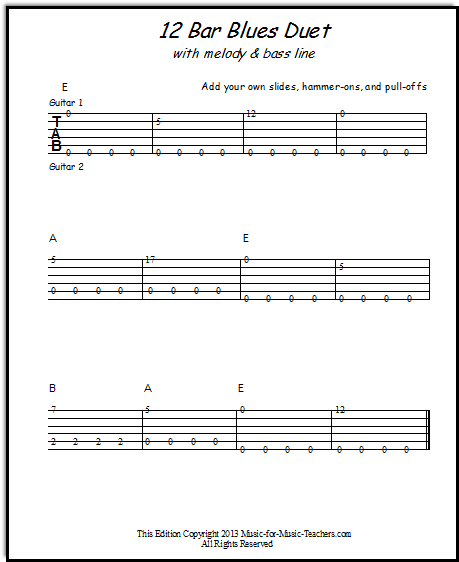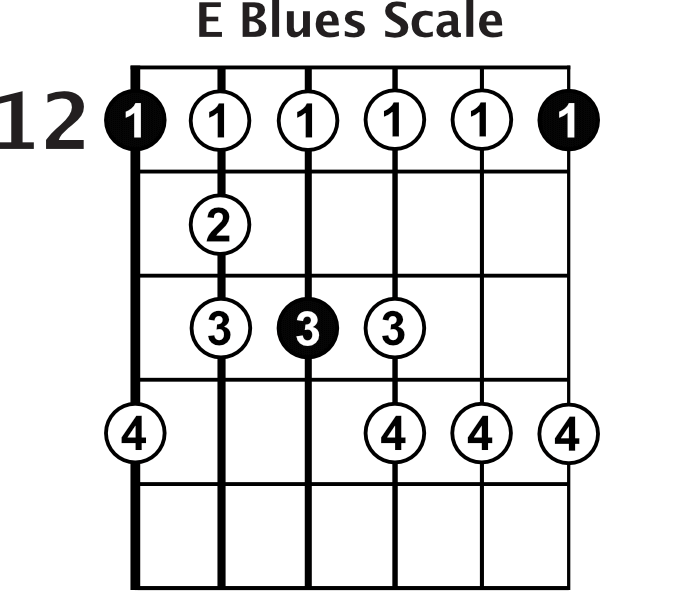The Greatest Guide To Blues Guitar Tab Books
Wiki Article
Getting My Blues Guitar Books To Work
Table of ContentsAn Unbiased View of Blues Guitar Tab Books9 Simple Techniques For Blues Guitar BooksTop Guidelines Of Blues Guitar SolosThe Single Strategy To Use For Blues Guitar SolosAll About Blues Guitar LessonsBlues Guitar Books for BeginnersThe Basic Principles Of Blues Guitar Books
Because this range is extra details in nature, i. e. it outlines the chord extra straight than the minor pentatonic range which lays out the secret, this range can just fit one chord each time. This implies that if you are soloing over A7, you use the A major pentatonic range, and after that when you change to the D7 chord, you need to switch over to the D significant pentatonic scale.Try placing on a 2 chord vamp when you have this scale under your fingers, A7-D7 four bars each for instance, as well as then relocate between both significant pentatonic scales as you solo over each chord in the development. It will certainly take a little bit of time to get this range right into your solos, however if you are aiming to bring a country, swing, dive blues appear to your lines, then this is the excellent scale to discover.
Some Ideas on Blues Guitar Solos You Need To Know
Start discovering this scale by putting on an A7 to D7 support track, four bars each, and also relocating between the An and also D mixo pent ranges as the chords change on the track. From there, take these very same scales and also apply them to a complete blues progression, such as the support tracks supplied at the end of this lesson.The last scale that we will certainly explore in this area of the Blues Guitar Concept Guide is the Mixolydian Range (blues guitar solos). The fifth setting of the major scale system, this 7-note range is typically made use of by country and also rock players as they solo over blues chords as well as chord developments. Including the periods 1-2-3-4-5-6-b7-1, this scale consists of all of the notes of the 7th chord, 1-3-5-b7, in addition to the 2-4-6 expansion notes that add color to your soloing lines in a blues context.
Blues Guitar Solos Can Be Fun For Anyone
Since this range outlines the 7th chord arpeggio, you will certainly need to change this scale in addition to each chord in cry chord development. You will certainly play A Mixo over A7, D Mixo over D7, and also E Mixo over E7, if you were soloing over a blues progression in the secret of A.Try having fun over an A7 support track to begin, using just the A Mixo Range to construct your lines. When that fits, include a D7 chord and also start to switch over scales as you switch scales in your soloing method routine. Take the Mixo range to your blues soloing concepts over the entire 12-bar form to see as well as listen to just how this scale fits over that chord progression when soloing.
Things about Blues Guitar Solos
The essential blues chord is the Leading 7th, which is built from the fifth note of the major scale as well as consists of the periods 1-3-5-b7, which is where we'll start in this area as you check out 7th chords and arpeggios on the guitar. From there, you will certainly likewise learn exactly how to play other essential arpeggios as well as chords for the blues, such as 9th and also 7 # 9 chords and also arpeggios on the guitar. blues guitar lessons.Again, since this can be complicated to do, start by soloing over an A7 vamp, then increase to A7-D7, and also ultimately to the entire blues develop. Arpeggios are a wonderful way to describe any chord in a blues straight, while bursting out of the a lot more common range seems that many blues players stick to when initial checking out blues soloing principles.
The Ultimate Guide To Blues Guitar Books


Some Known Questions About Blues Guitar Tabs.
This means that you solo over Am7 with an Am7 arpeggio and also solo over Dm7 with a Dm7 arpeggio. Soloing over a minor blues progression can be a bit boring when making use of just the minor pentatonic or minor blues scales, so understanding and also using the m7 arpeggios is a wonderful method to break up your scale job in a small blues circumstance.Working in the very same method as 9th arpeggios, these shapes are used to include color to your 7th chords, therefore you don't need to wait up until you see A9 on a graph to play that chord, you can play A9 whenever you see A7 created as they are from the exact same family of leading chords.
An Unbiased View of Blues Guitar Lessons
Try having fun with a blues chord development as well as when you reach the V7 chord, E7 as in the instance listed below, attempt playing E7 # 9 as well as see how it seems to your ears. This chord is additionally utilized as the V7 chord in a minor blues chord development, which you can see in bar 10 of the minor blues instance near the end of this blues guitar concept overview.
Report this wiki page